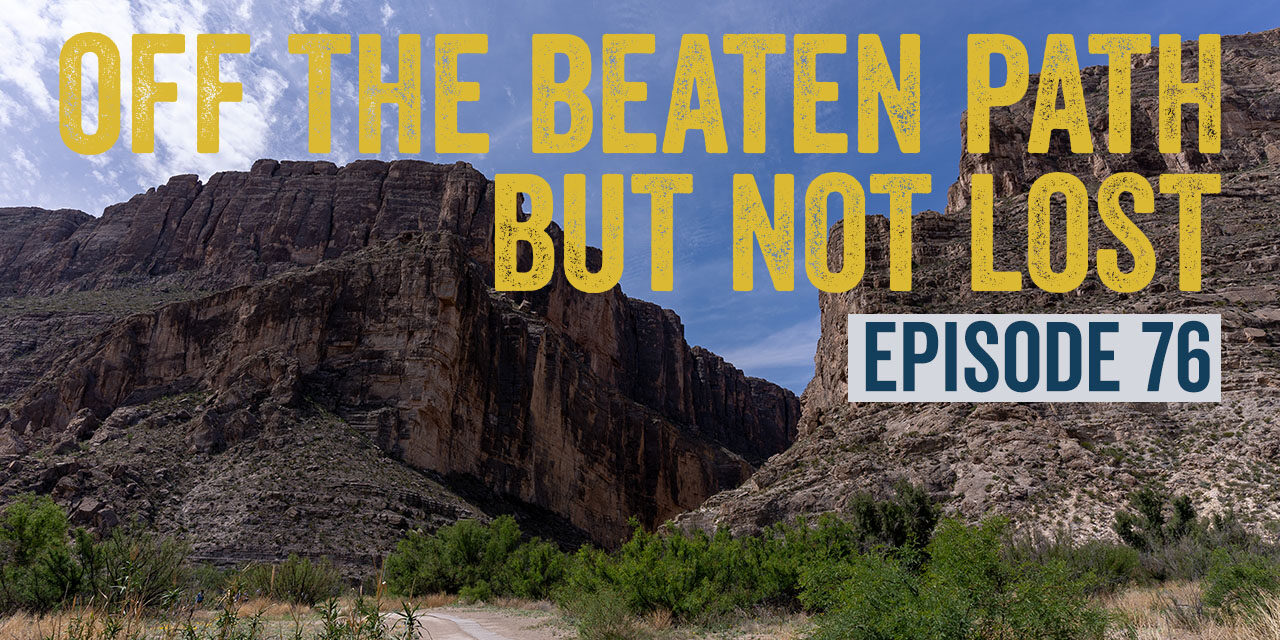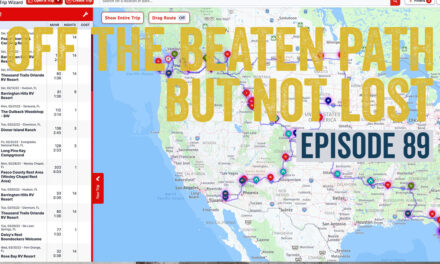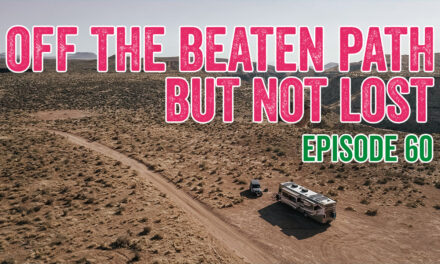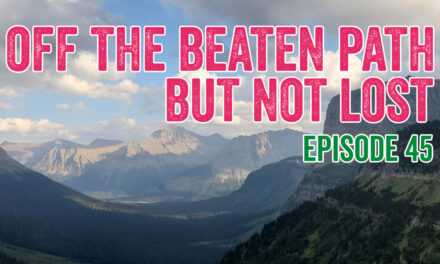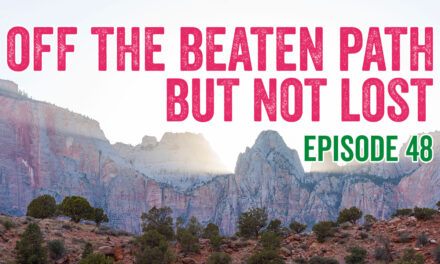Welcome back to another episode of “Off the Beaten Path but Not Lost.” We're going on an epic journey to the Lone Star State to explore Big Bend National Park in Texas. We'll uncover the hidden gems, from epic offroad trails to the pretty cacti blooms. We also explore Black Gap Road, a Jeep Badge of Honor Trail.
Looking for something specific? 👇
Listen to the podcast
Hey adventurers! 🚐
Did this episode spark some wanderlust, or did it remind you of one of your own off-the-beaten-path stories? If you felt that campfire friendship while listening, we would be super grateful if you’d take a moment to pop over to Apple Podcasts. Please leave us a rating, maybe say hi in the review section, and don’t forget to subscribe. It’s like giving a friendly nod to a fellow RVer on the open road.
Do you have a hidden gem of a location you think we should explore next? Or maybe a practical tip for full-time RV living? Leave us a message—this journey is all the richer when shared with the community.
🏞️ Safe travels, and see you down the road!
SUBSCRIBE: APPLE PODCASTS | PODBEAN | SPOTIFY | IHEART RADIO | PANDORA | TUNEIN | Plus, almost all podcasting apps. Let us know if you can't find us on your app.
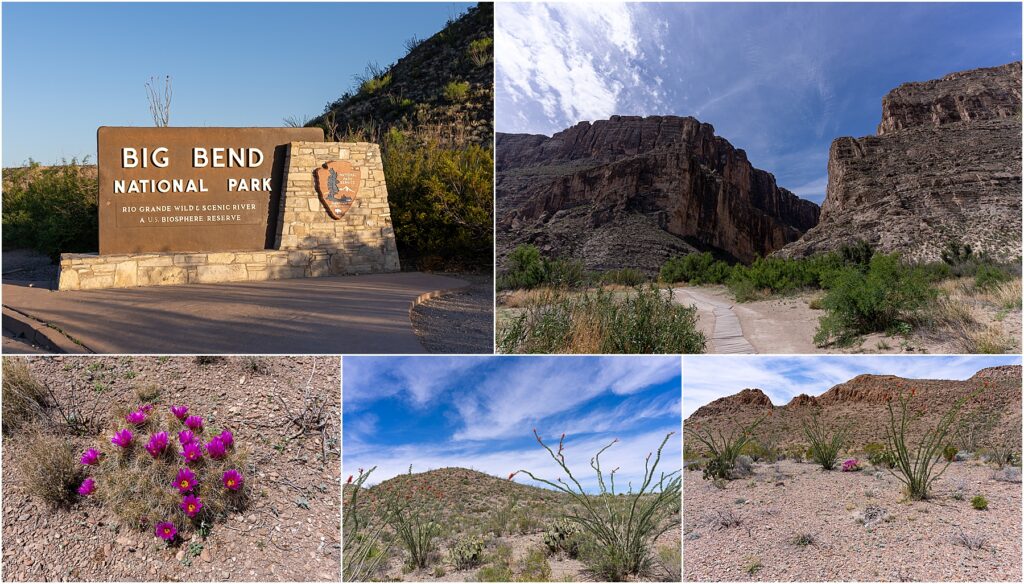
Big Bend National Park in Texas: A Brief Overview
In the southwestern part of Texas lies Big Bend National Park. The park is a massive area of over 800,000 acres (1,250 square miles) waiting to be explored. Big Bend has it all: towering mountains, breathtaking canyons, sprawling deserts, and the winding Rio Grande River.
The Chisos Mountains rise above the landscape in the middle of the park, reaching almost 8,000 feet (not the highest in Texas). From these lofty peaks, the Chihuahuan Desert covers most of the park. The Rio Grande River forms the border between the United States and Mexico.
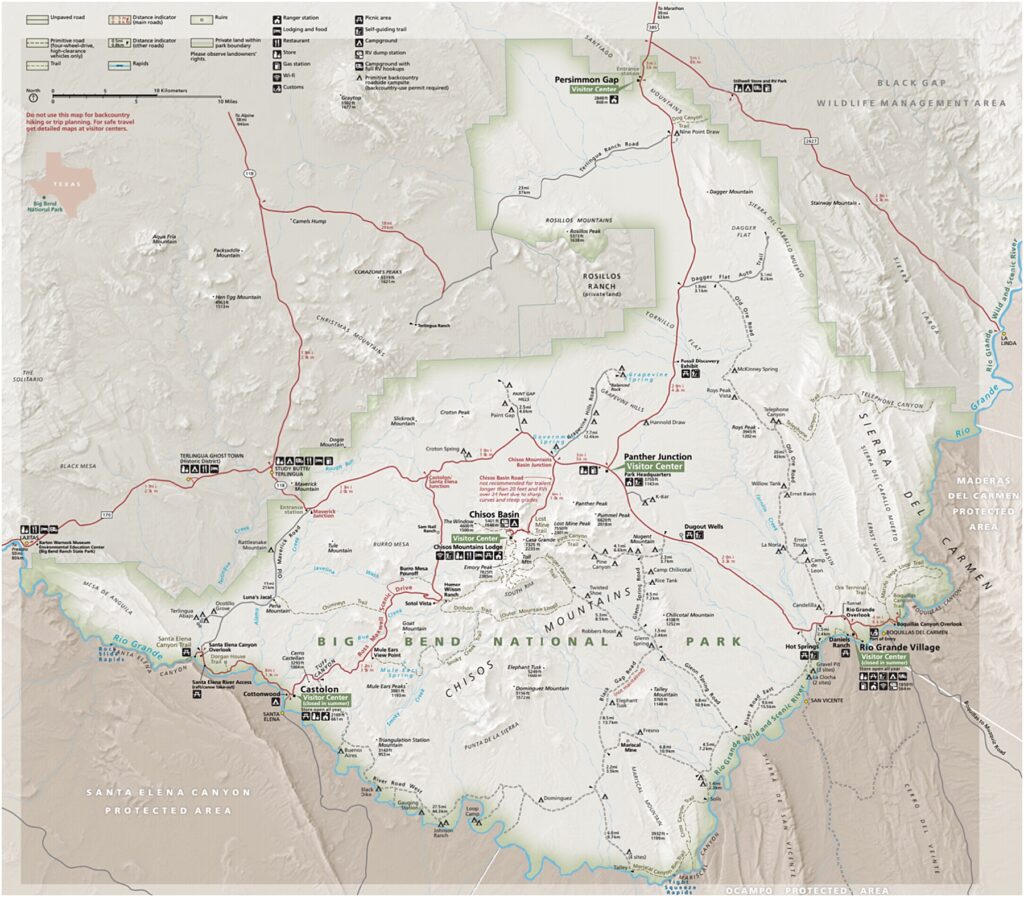
History
Big Bend National Park has a rich and varied history that's as captivating as its landscapes. Native American presence dates back over 10,000 years. The park is home to many archaeological sites, such as rock shelters and pictographs that tell the story of the region's long history of human habitation.
Over the centuries, various tribes like the Chisos, Jumano, Mescalero, Apache, and Comanche have called this land their home.
The arrival of Spanish explorers in the 16th century named the park “Big Bend” for the sharp turn in the Rio Grande River. The Spanish established missions and trade routes in the surrounding areas.
As settlers began arriving in the 19th century, the face of Big Bend continued to change. Ranching and mining became the leading industries in the area, bringing both prosperity and conflict.
The official establishment of Big Bend National Park was on June 12, 1944. Since then, the park has expanded to protect more land and preserve its diverse ecosystems.
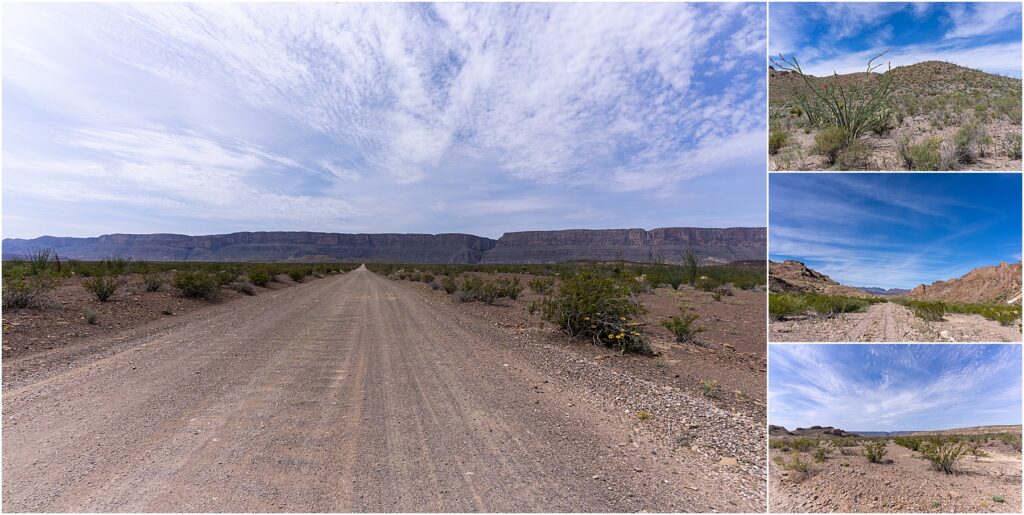
Ecosystems
Big Bend National Park is a treasure trove of diverse ecosystems. The Chihuahuan Desert is the largest in North America and occupies the majority of Big Bend. The desert's rugged beauty is home to an array of hardy plant life, such as yucca, agave, and the iconic ocotillo. It's also home to many wildlife, including roadrunners, jackrabbits, and even the elusive mountain lion.
Rising from the desert floor, the Chisos Mountains are a breathtaking centerpiece of the park. This mountain range is the only one in the United States to be contained entirely within a national park. The higher elevations contrast the surrounding desert. You will find lush woodlands of juniper, oak, and pine and many bird species that find refuge in the cooler altitudes in the Chisos Mountains.
The mighty Rio Grande River courses through Big Bend, creating a vibrant ribbon of life along its banks. Here, you'll find cottonwood trees, dense thickets of cane, and an array of birdlife, from great blue herons to colorful kingfishers.
Big Bend's water resources include a variety of springs that provide vital sustenance to the park's inhabitants. These springs create small oases within the arid landscape, nurturing a unique microcosm of flora and fauna.
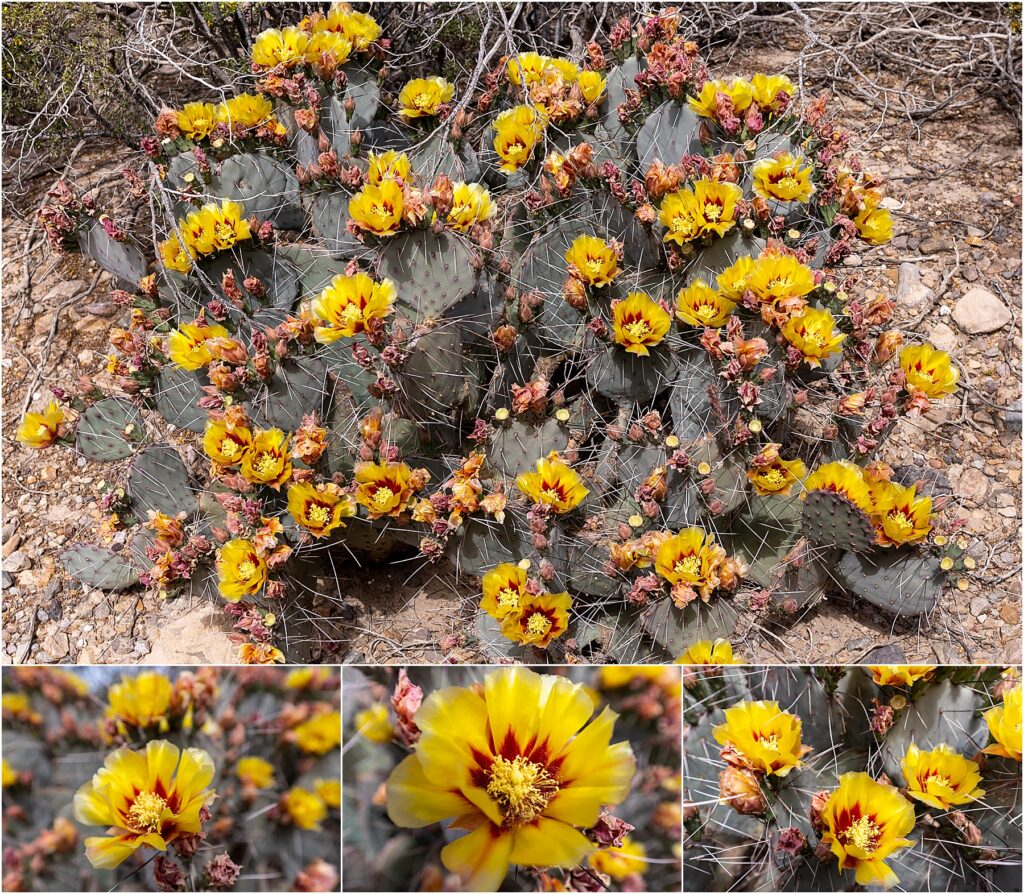
Flora & Fauna
The incredible variety of ecosystems within Big Bend National Park gives rise to an astonishing amount of plant and animal life.
Big Bend's plant life is as varied as its terrain, with over 1,200 species. The arid Chihuahuan Desert is dotted with cacti, yuccas, and ocotillos, while the higher elevations of the Chisos Mountains host woodlands of oak, juniper, and pine. Among these plants, you'll find some 60 species of cacti, each with unique adaptations for surviving in this harsh environment.
The park's wildlife is diverse, with 75 species of mammals roaming the park. Big Bend is home to a fantastic mix of animals, like black bears and hard-to-spot mountain lions, as well as curious javelinas and clever coyotes. The endangered Mexican black bears have recovered in recent years thanks to the park's conservation efforts.
Big Bend is home to 56 species of reptiles, including the Big Bend slider, greater earless lizard, and four different species of rattlesnakes. The park also has 40 species of fish and 11 species of amphibians.
For birdwatchers, Big Bend is nothing short of a paradise, with around 400 species of birds calling the park their home. Big Bend National Park is one of the top birdwatching destinations in the United States.
Geology
In Big Bend, you can find 500-million-year-old limestone to 28-million-year-old volcanic formations. This incredible variety has given rise to unique features like mountains, canyons, and ancient sea beds.
In fact, the region was once covered by a shallow sea. Its remnants are still evident in the limestone and marine fossils found throughout the park.
Big Bend National Park's diverse geological landscape displays various rock types. You will find sedimentary formations like limestone, sandstone, and shale. Visitors can discover igneous rocks like basalt, rhyolite, and granite and metamorphic rocks like schist, gneiss, and marble. These rock formations offer a unique opportunity for visitors to learn about geology and the earth's natural history.
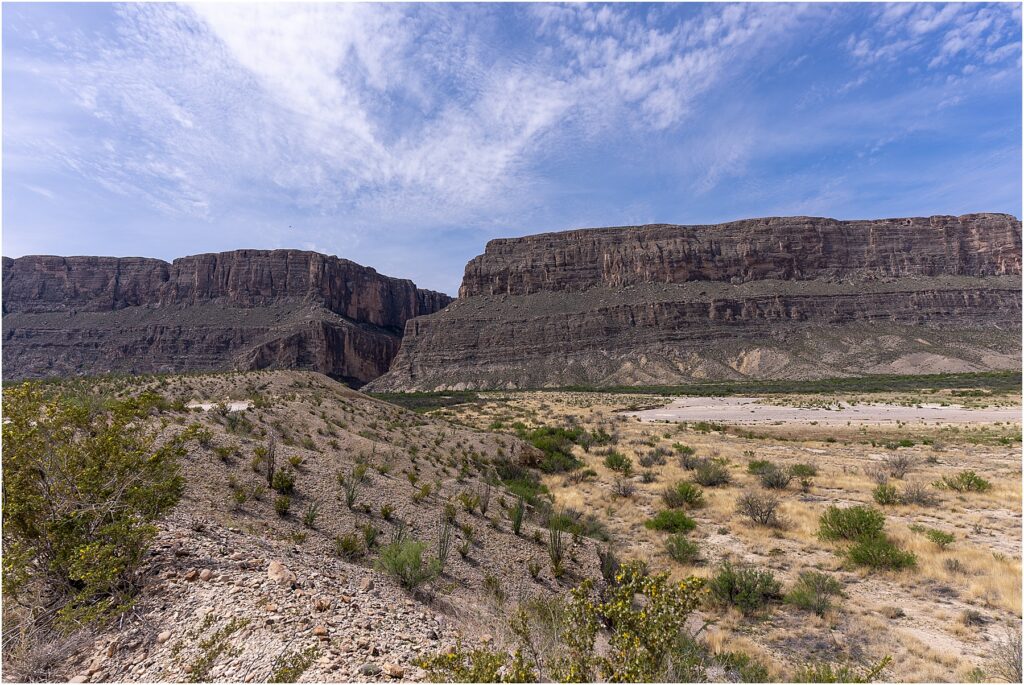
Around 28 to 50 million years ago, Big Bend experienced volcanic activity that shaped the Chisos Mountains and Pine Canyon Caldera. Besides these volcanic formations, the park has fossils of marine invertebrates, dinosaurs, and ancient mammals. The fossils provide a glimpse into the planet's past and help us understand how life has evolved over millions of years.
Big Bend's geological landscape is changing due to natural processes like erosion and weathering. The natural processes make the park an ideal destination for studying and appreciating the dynamic history of our planet.
Tips when visiting Big Bend National Park
Visiting Big Bend National Park is an unforgettable experience. However, planning your trip is essential, with annual visitation nearing 600,000 visitors annually – an increase of 50% since 2016 – and very few places to lodge or camp. Consider the following tips and information to make the most of your adventure in this breathtaking park.
The park's busy season generally runs from November through April, but remember that Big Bend is a desert park, so you should be prepared for extreme conditions. Spring, from February to April, offers comfortable temperatures perfect for exploring. From May to September, summer can be scorching hot, with temperatures exceeding 100 degrees in the lower elevations by late morning and often reaching over 110 along the Rio Grande. Afternoon thunderstorms are also common during this time. Winter, from October to January, brings cooler temperatures, but the weather can quickly turn cold at any time during these months.
When you arrive at the park, you'll need to pay an entrance fee of $30 per vehicle (your annual pass), which grants you access for seven days. Be sure to pick up the park brochure, which includes a detailed map, and carry a topographical map and a compass, as many trails can be poorly defined and difficult to follow. Cell phone signal may be unreliable, so downloading maps in advance is recommended.
Staying safe in the park is crucial. Driving anywhere in the park takes longer than you think—give yourself enough to get there before dark. Hydration is critical, so have one gallon of water per person daily for drinking and cooking. You can find water at every visitor center, but no reliable sources are available in the backcountry. Also, carry additional water for your vehicle.
Be alert for venomous snakes and insects, and exercise caution around mountain lions and black bears by securing your food. Be extremely careful if you swim or wade in the Rio Grande, as sudden drop-offs and unpredictable currents can be hazardous.
If you plan to bring a pet, be aware that pets are prohibited on trails, off roads, or the river. Pets can go wherever your car can—and cannot enter Mexico at the Boquillas Port of Entry.
Where to stay when visiting the park
When planning your visit to Big Bend National Park, it's necessary to consider lodging and camping options, especially during the busy season from November through April. During this time, the Chisos Mountains Lodge and the park's developed campgrounds tend to be packed every night.
Within the park, there are several lodging and camping options. The Chisos Mountains Lodge is a popular choice for visitors. The park takes care of three campgrounds: Chisos Basin Campground (Chisos Mountains), Rio Grande Village Campground (Rio Grande/east side), and Cottonwood Campground (Rio Grande/west side). The Rio Grande Village RV Park, operated by Aramark, offers 25 sites with full hook-ups and is adjacent to the Rio Grande Village Store.
A permit is required for those seeking more adventurous accommodations, backcountry camping, and river trips. Permits for most designated backcountry campsites, Chisos backpacking campsites, and primitive roadside campsites are available online through recreation.gov.
Desert wilderness backpacking and primitive roadside sites along the Maverick Road and remote River Road can be obtained in person only at park visitor centers. Permits cost $10 per night for overnight use.
You can make reservations online up to six months in advance, and a limited number of campsites can be reserved up to 14 days in advance. It's important to note that there are no overflow campsites or “boondocking” options in Big Bend National Park and no nearby public lands outside the park. The park's primitive backcountry campsites also tend to fill up most nights.
Multiple campgrounds and RV-friendly spots, such as the Study Butte RV Park, are available outside the park. Plan and secure reservations for a smooth and enjoyable Big Bend National Park visit.
Boquillas Crossing Port of Entry
Big Bend National Park shares a 118-mile border with Mexico, and visitors have the opportunity to experience the Boquillas Crossing Port of Entry.
Boquillas Crossing, the only legal border crossing point within Big Bend National Park, connects the park to the charming Mexican village of Boquillas del Carmen. Visitors can cross the border on foot or by rowboat, but they must have a valid passport to re-enter the United States.
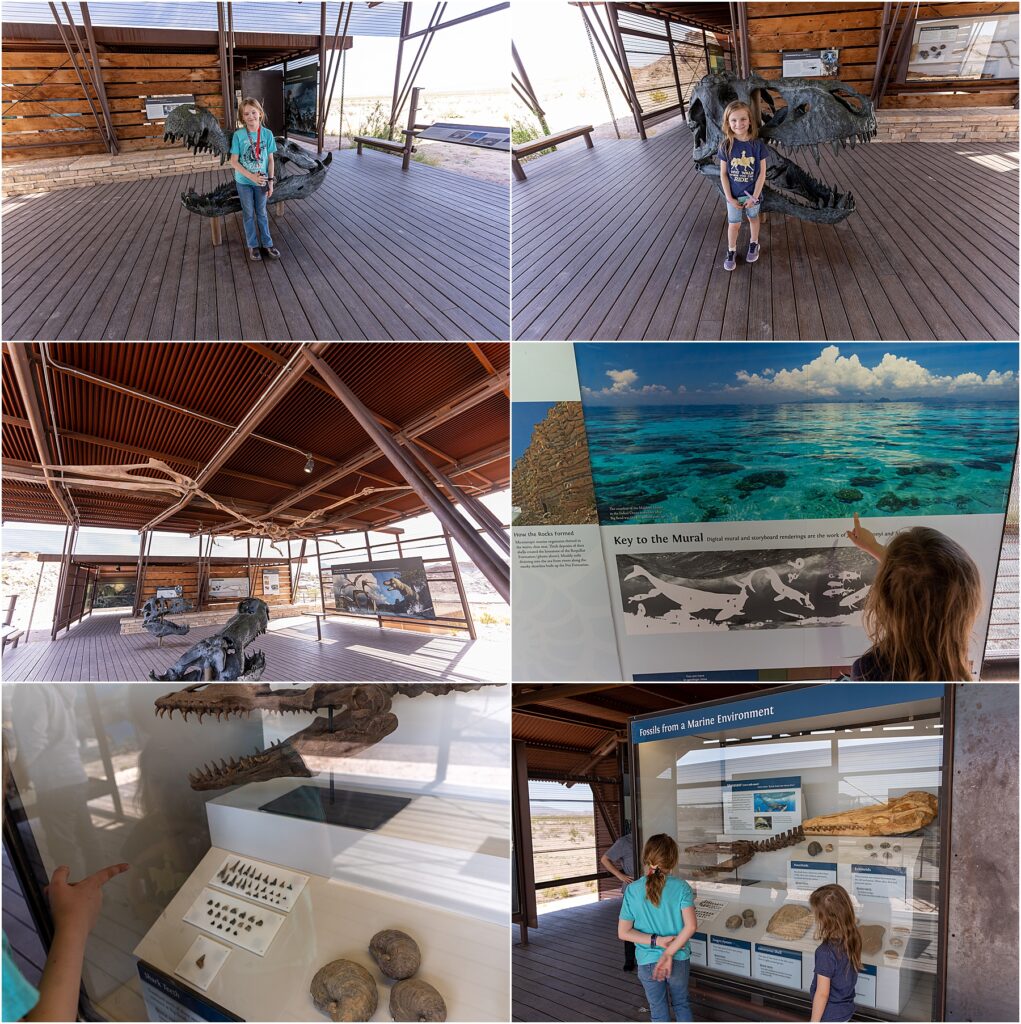
Key Attractions and Activities
The Fossil Discovery Exhibit at Big Bend National Park is a must-visit attraction that showcases the park's rich paleontological history. Some remarkable fossils in the park include the Alamosaurus, a large long-necked sauropod from the Late Cretaceous period; Quetzalcoatlus, one of the largest known pterosaurs with a wingspan of up to 36 feet; and even remnants of the famous Tyrannosaurus rex.
With more than 150 miles of trails, Big Bend National Park is a hiker's paradise, offering day hikes and backpacking trips for all skill levels. Besides the fantastic hiking opportunities, the park is known for its dark skies. Big Bend National Park at night is one of the best places to view stars, planets, and other celestial objects because of the remote location and limited light pollution. You will be left starstruck!
To further enhance your experience, consider participating in events and ranger-led programs available at the park. These activities provide valuable insights into Big Bend's unique ecosystems, history, and geological wonders, making your adventure in this breathtaking park even more unforgettable.
The Rio Grande stretches over 1,900 miles from its headwaters in Colorado to its mouth at the Gulf of Mexico. One hundred eighteen miles of the river is on the border of Big Bend National Park and Mexico.
Big Bend National Park is a fantastic destination for river rafting and canoeing enthusiasts. The park features several river canyons, such as Santa Elena, Mariscal, and Boquillas, providing a range of experiences for rafters and canoeists of varying skill levels. Guided river trips, from half-day excursions to multi-day adventures, are available through authorized outfitters.
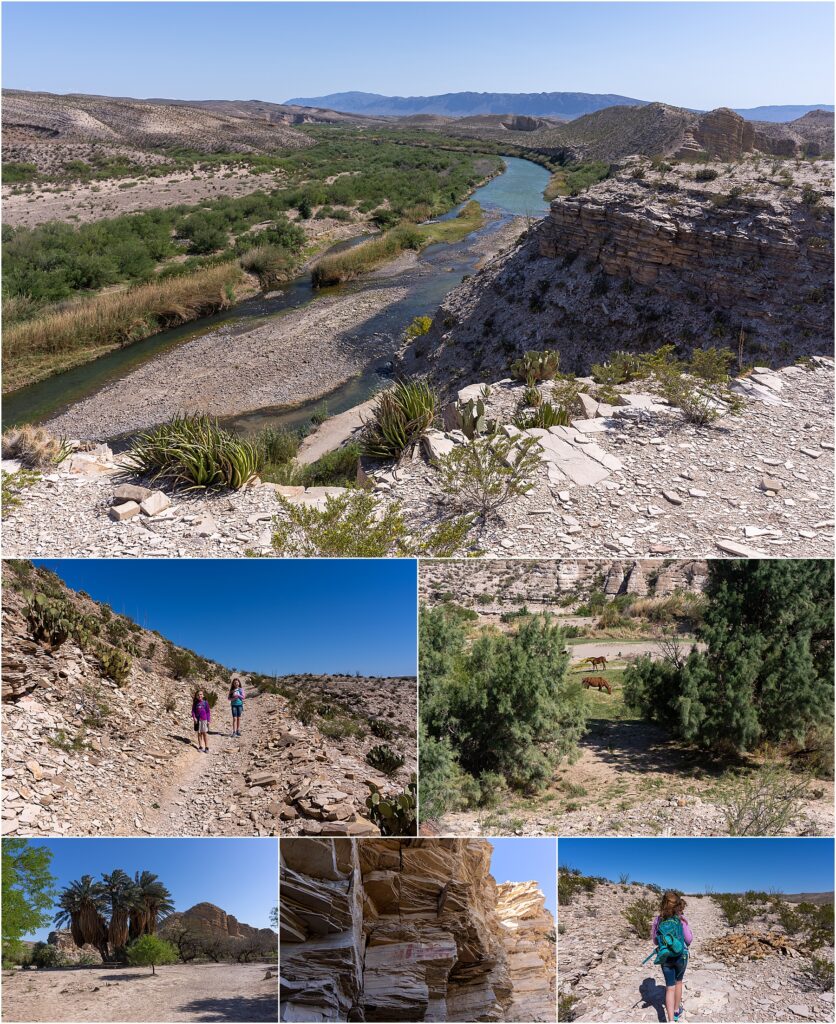
The Hot Springs Historic District, located along the Rio Grande, is another unique attraction within the park. Home to natural hot springs with temperatures around 105°F, the area was once a popular health resort in the early 20th century. Remnants of the resort, including a bathhouse and other structures, can still be found in the area. Visitors can access the hot springs via a short hike from the trailhead and enjoy a relaxing and scenic experience along the river.
Big Bend National Park offers guided ranger programs to help visitors learn about and enjoy the park's natural and cultural resources.
The Junior Ranger program at Big Ben National Park offers young visitors an opportunity to earn a badge and up to three patches by participating in various activities and hikes. It's a fun and educational way for children to engage with the park and create lasting memories.
Scenic Byways and Dirt Roads: Exploring by Car
Big Bend National Park also features several paved roads that provide access to some of the park's most stunning scenery and attractions.
Chisos Basin Road, a 6-mile stretch, leads to the Chisos Basin, which houses a visitor center, campground, lodge, restaurant, camp store, and numerous hiking trails.
The Ross Maxwell Scenic Drive, a 30-mile paved road within the park, offers breathtaking views and access to some of the park's most notable geological and historical features. This scenic drive is named after Ross Maxwell, a geologist and the park's first superintendent, who played a crucial role in the park's development.
Big Bend National Park also offers a variety of dirt roads that lead to unique and fascinating destinations, providing a more rugged and adventurous experience for visitors. Due to their rough terrain, some roads may require high-clearance vehicles. It is crucial to be prepared with plenty of water, snacks, a full tank of gas, and emergency supplies, as there are no services or facilities along the road.
Dagger Flat Auto Trail is a 14-mile round trip route that takes visitors eastward into a small valley filled with a forest of giant dagger yuccas. Allow approximately two hours for the round trip to appreciate the unique scenery along this trail fully.
Grapevine Hills Road stretches 6.4 miles and leads to the Grapevine Hills trailhead. Once there, visitors can embark on the 2.2-mile round-trip Grapevine Hills Trail, which concludes at the picturesque Balanced Rock. This road can be rough, so a sturdy, high-clearance vehicle is recommended.
Hot Springs Road, a 2-mile dirt path, takes visitors through a thin wash to the Hot Springs Historic District. You can find the ruins of J.O. Langford's resort. A 0.5-mile round-trip trail leads to the hot springs, and a one-mile loop from the hot springs circles the bluff above, offering additional views and exploration opportunities.
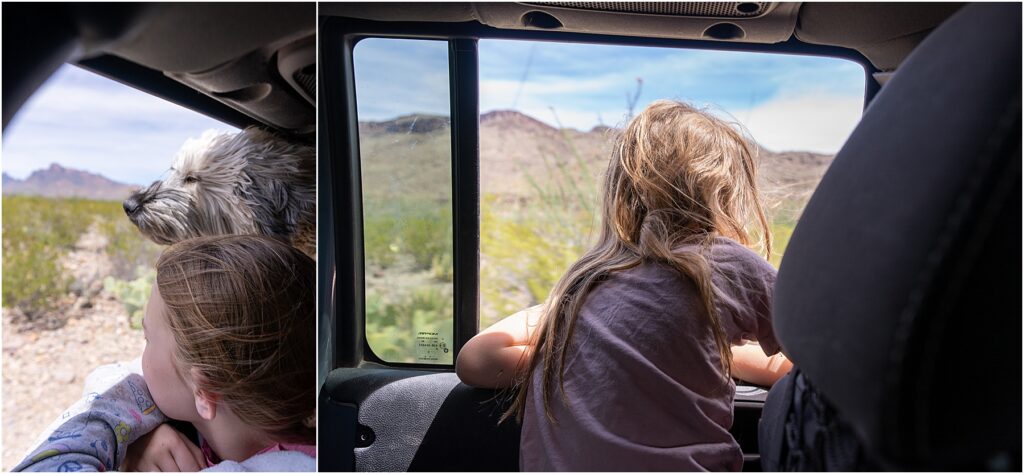
Old Maverick Road is a 14-mile dirt road that allows visitors to explore the park's more remote and rugged areas. This road stretches from the park's Maverick Entrance Station, near the park's western entrance, to the Santa Elena Canyon area, one of the most iconic sights in Big Bend.
The numerous primitive dirt roads in Big Bend National Park allow adventurous visitors to explore some of the park's most remote and untouched areas. These roads are often rough and require a high-clearance, four-wheel-drive vehicle to navigate safely. It is essential to check with the park's visitor center for current road conditions before driving on these roads.
Old Ore Road is a 26-mile primitive road that was once used “to transport ore from Mexican mines to the railroad station at Marathon.” This historic road takes approximately 3-4 hours to drive from one end to the other, offering visitors a glimpse into the park's mining history while passing through rugged and diverse landscapes.
Glenn Springs Road is another primitive road that provides access to two additional primitive roads: Pine Canyon Road and Juniper Canyon Road. These roads lead to more remote areas of the park, where visitors can find solitude and encounter unique geological features, as well as a variety of flora and fauna.
River Road is a 51-mile primitive road that traverses the southern portion of Big Bend National Park. This long and winding road offers breathtaking views of the Rio Grande, access to several river canyons, and opportunities for birdwatching, hiking, and river trips.
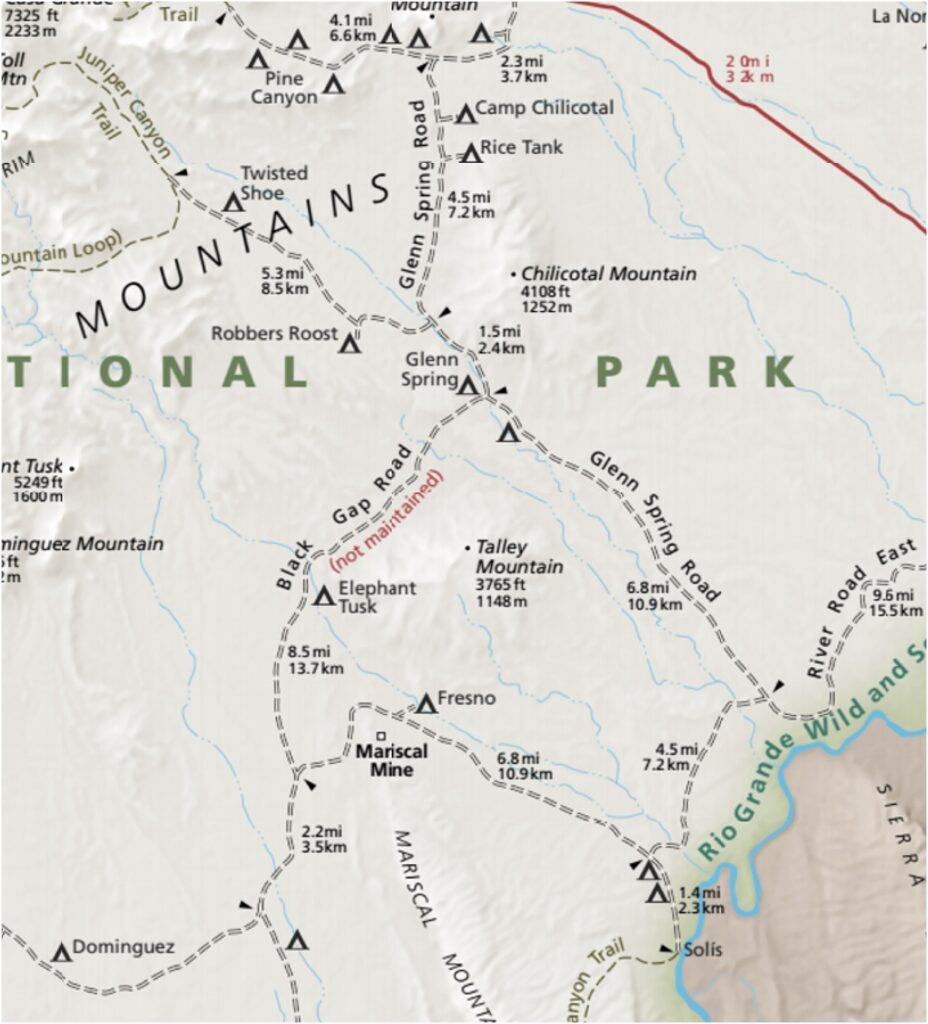
Black Gap Road
Black Gap Road is an extraordinary 8.5-mile off-road trail in the middle of Big Bend National Park, offering a unique and challenging experience for experienced off-roaders and adventure enthusiasts. Recognized as a Jeep Badge of Honor trail, this rugged and remote route showcases the park's diverse landscapes and natural beauty while providing an adrenaline-pumping adventure.
Named after the infamous ledge obstacle that off-road enthusiasts must navigate, Black Gap Road is an unmaintained, 4×4-only track that demands skill, preparation, and a well-equipped vehicle. Before attempting the trail, you can stop at the Panther Junction visitor center to get a trail report and ensure the road is passable, as conditions can change rapidly.
The road connects Glenn Springs Road to River Road, winding through the park's remote wilderness areas and offering a chance to encounter wildlife, rare plants, and stunning geological formations. The north half of Black Gap Road is more akin to an off-road trail, requiring technical driving skills to traverse rocky and steep terrain. In contrast, the south half consists of a gravel road, generally more manageable.
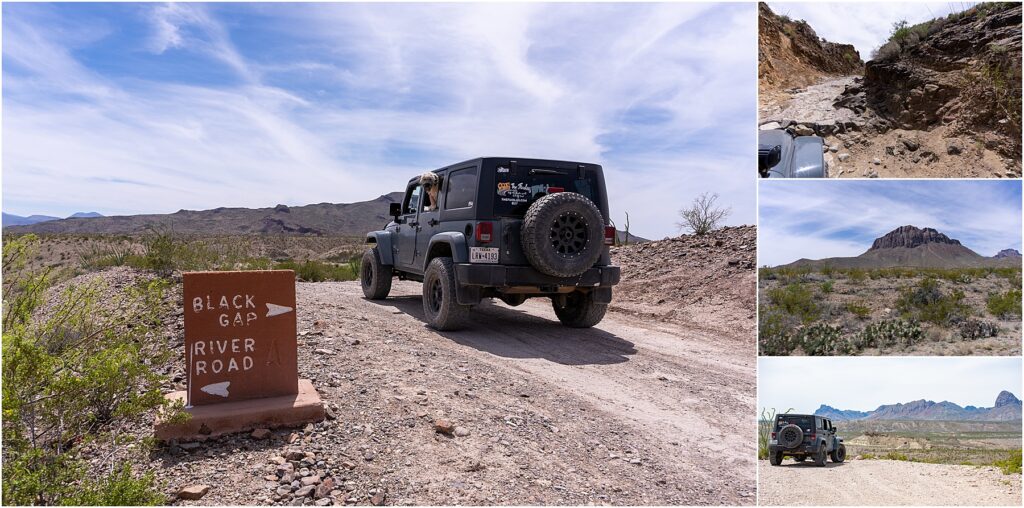
You can find the trailhead for the northern section of Black Gap Road at Glenn Springs, where visitors can begin their off-road journey. About four miles into the trail, drivers will encounter the Black Gap ledge obstacle, a challenging and technical section.
Exploring Black Gap Road in Big Bend National Park is an unforgettable experience that allows visitors to test their off-roading abilities and immerse themselves in the park's pristine wilderness. With its challenging terrain, beautiful scenery, and remote location, Black Gap Road is an unparalleled adventure that every experienced off-roader should consider adding to their bucket list.
Driving on primitive dirt roads in Big Bend National Park can be a challenging yet rewarding experience for well-prepared and adventurous visitors, allowing them to discover the park's hidden gems and immerse themselves in its untamed beauty.
Signing up is always free. No credit card is required.
That is Big Bend National Park
Big Bend offers a variety of scenic views and experiences for visitors. The Santa Elena Canyon, which the Rio Grande carved, is a popular attraction for its picturesque beauty. Additionally, the park has paved scenic roads and many miles of improved and primitive dirt roads that visitors can explore. One of the challenging dirt roads is the Jeep Badge of Honor Black Gap Road. Omit, there is something for everyone in Big Bend National Park.
Big Bend National Park offers many activities for visitors seeking adventure and exploration. Those who enjoy water activities can go rafting or canoeing down the Rio Grande. Additionally, visitors can delve into the park's past at the Fossil Discovery Exhibit. You may experience the diverse wildlife or those fantastic night skies.
Big Bend National Park is a must-see if you are looking for a remarkable destination.

